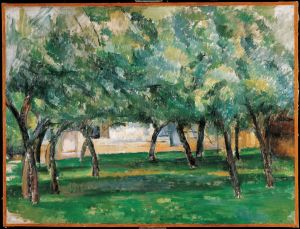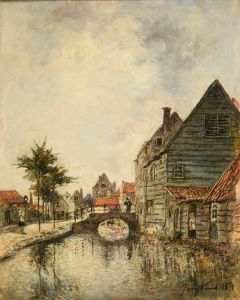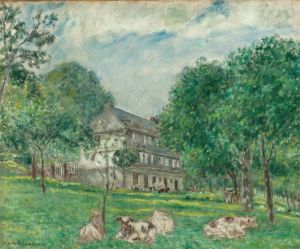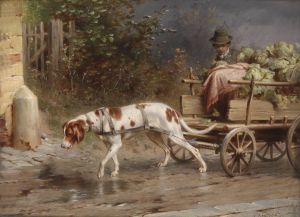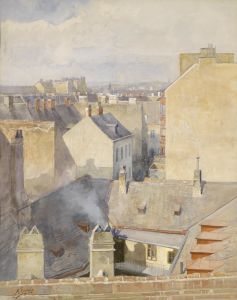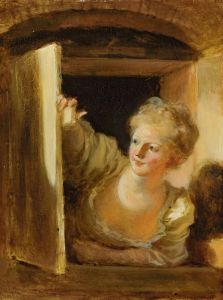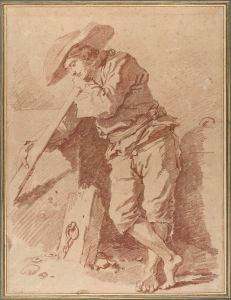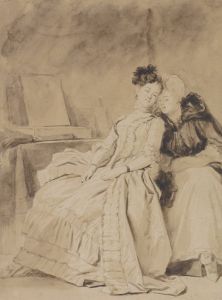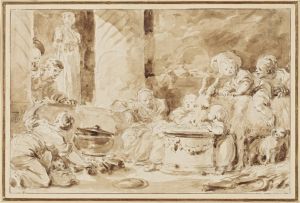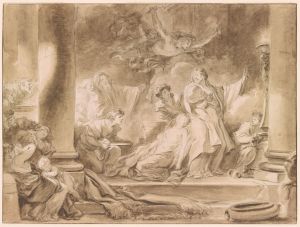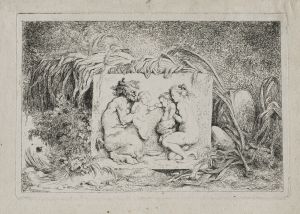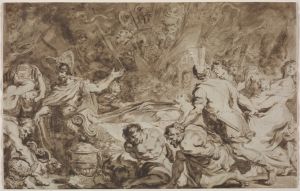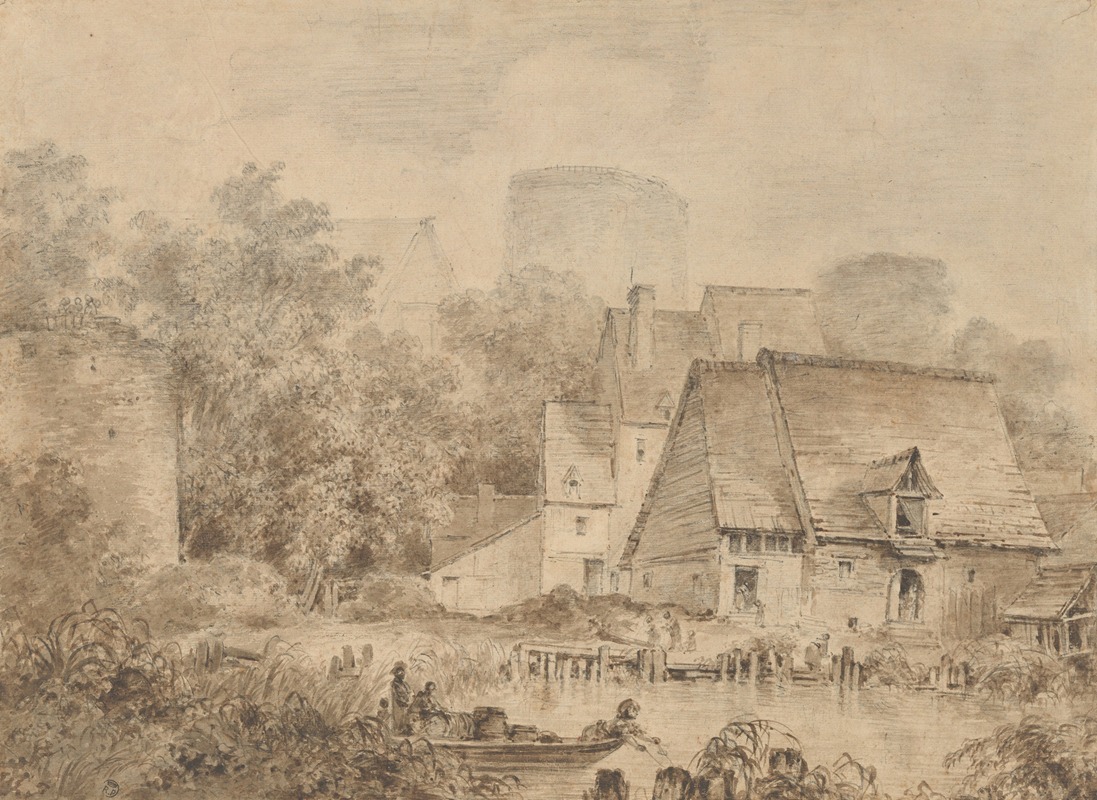
Farm Buildings beside a Waterway
A hand-painted replica of Jean-Honoré Fragonard’s masterpiece Farm Buildings beside a Waterway, meticulously crafted by professional artists to capture the true essence of the original. Each piece is created with museum-quality canvas and rare mineral pigments, carefully painted by experienced artists with delicate brushstrokes and rich, layered colors to perfectly recreate the texture of the original artwork. Unlike machine-printed reproductions, this hand-painted version brings the painting to life, infused with the artist’s emotions and skill in every stroke. Whether for personal collection or home decoration, it instantly elevates the artistic atmosphere of any space.
Jean-Honoré Fragonard, a prominent French Rococo painter, is celebrated for his exuberant and fluid style, often depicting scenes of romance and pleasure. Among his extensive oeuvre, "Farm Buildings beside a Waterway" stands out as a testament to his versatility and skill in landscape painting, a genre he occasionally explored alongside his more famous works of intimate and playful scenes.
"Farm Buildings beside a Waterway" is a lesser-known piece by Fragonard, yet it captures the artist's ability to infuse landscapes with a sense of vitality and movement. The painting depicts a serene rural scene, featuring farm buildings situated alongside a tranquil waterway. The composition is characterized by its dynamic use of light and shadow, which Fragonard employs to create depth and a sense of immediacy. The brushwork is loose and expressive, a hallmark of Fragonard's style, allowing the viewer to feel the textures of the natural environment and the rustic architecture.
The painting reflects Fragonard's interest in capturing the essence of the countryside, a theme that resonated with the Rococo movement's fascination with nature and pastoral life. Although primarily known for his genre scenes and portraits, Fragonard's landscapes demonstrate his keen observation of nature and his ability to convey its beauty through a Rococo lens. The use of soft, warm colors and the gentle interplay of light suggest a peaceful, idyllic setting, inviting viewers to immerse themselves in the tranquility of rural life.
Fragonard's landscapes, including "Farm Buildings beside a Waterway," often exhibit a sense of spontaneity and freedom, which can be attributed to his practice of painting en plein air, or outdoors. This approach allowed him to capture the changing effects of light and atmosphere with immediacy and authenticity. While Fragonard's landscapes may not have achieved the same level of fame as his other works, they nonetheless reveal his mastery of composition and his ability to evoke emotion through the depiction of natural scenes.
The exact date of creation for "Farm Buildings beside a Waterway" is not well-documented, but it is believed to have been painted during the latter part of Fragonard's career, a period when he increasingly turned to landscape painting. This shift in focus may have been influenced by his travels through Italy and the Netherlands, where he was exposed to different artistic traditions and techniques.
Today, "Farm Buildings beside a Waterway" is appreciated for its contribution to the broader understanding of Fragonard's artistic range. It serves as a reminder of the artist's ability to transcend the boundaries of genre, capturing the beauty of both human and natural worlds with equal finesse. The painting remains an important part of Fragonard's legacy, illustrating his capacity to find inspiration in the simplicity of rural life and to convey it with the same elegance and charm that define his more celebrated works.





